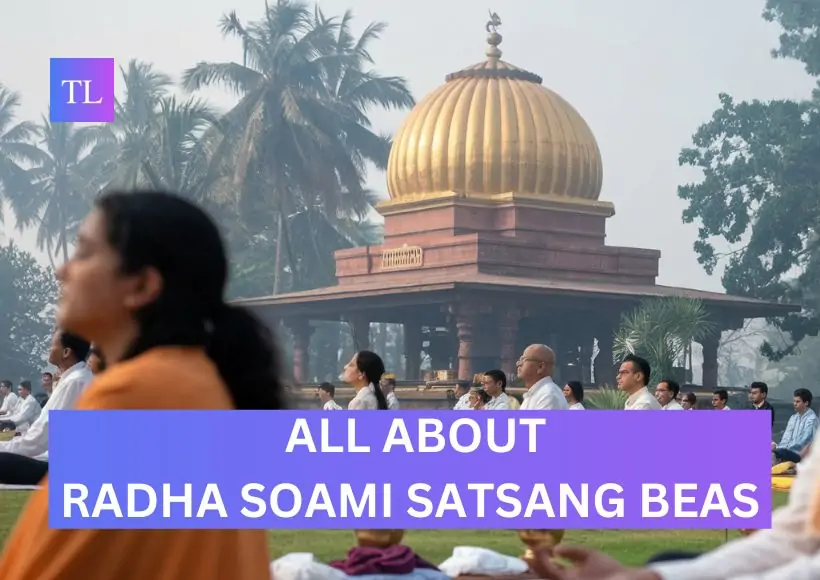Radha Soami Satsang Beas: Radha Soami Satsang Beas is non-sectarian and emphasizes that spirituality transcends religious and cultural boundaries. The organization teaches that all religions lead to the same ultimate truth and that spiritual attainment is the true purpose of human life. The core practice at Radha Soami Satsang Beas is Surat Shabd Yoga, a form of meditation that focuses on the inner divine light and sound. The goal of this practice is to achieve spiritual liberation by transcending the physical body and mind and connecting with higher spiritual realms.

Radha Soami Satsang Beas: Radha Soami Satsang Beas (RSSB) is a spiritual organization founded in India in 1891 by Jaimal Singh. It is one of several groups within the broader Radha Soami movement, which emphasizes the importance of meditation on the inner light and sound, as well as living an ethical life. RSSB is known for its teachings on spirituality, personal discipline, and the practice of meditation, and has a considerable following in India and internationally. Radha Soami Satsang is currently giving a spiritual direction to the new generation. Let us know about the history of Radha Soami Satsang in detail.-
History and Origin of Radha Soami Satsang-
1. Establishment and Early Years (19th Century)-
Jaimal Singh (1839-1903)- The origin of Radha Soami Satsang Beas is linked to the teachings of Jaimal Singh, a disciple of Shiv Dayal Singh (also known as Swami Ji Maharaj), the founder of the Radha Soami movement in Agra in 1861. After receiving spiritual guidance from Swami Ji Maharaj, Jaimal Singh traveled widely in search of spiritual knowledge before settling near the Beas River in Punjab, India. In 1891, he founded Radha Soami Satsang Beas, emphasizing the teachings he had received.
Teachings- Jaimal Singh’s teachings focused on Surat Shabd Yoga, a meditation practice focused on inner sound (shabd) and light (jyoti). He taught that spiritual liberation could be achieved by meditating on these inner phenomena, which were considered manifestations of the divine. This practice also included a vegetarian diet, abstinence from intoxicants, and leading a moral life.
2. Growth and Expansion (20th Century)-
Baba Sawan Singh (1858-1948)- After Jaimal Singh, Baba Sawan Singh played a key role in the expansion of Radha Soami Satsang Beas. Under his leadership, the organization grew significantly and attracted a large number of followers. He also established Dera Baba Jaimal Singh, the headquarters of the organization near Beas in Punjab. Baba Sawan Singh is credited with systematizing the teachings and practices of the satsang, making them accessible to a wider audience.
Publications and Outreach- During this period, the organization began publishing literature in various languages to spread its teachings. Baba Sawan Singh also appointed representatives in various regions to conduct satsangs (spiritual discourses) and guide followers. This helped the movement grow beyond Punjab, attracting followers from across India and even abroad.
Baba Jagat Singh (1884-1951)- Baba Jagat Singh succeeded Baba Sawan Singh and continued to lead the organisation with the same principles. His tenure saw further growth and consolidation of the organisation’s activities.
3. Modern Era (Mid-20th Century to Present)-
Maharaj Charan Singh (1916-1990)- The leadership of Maharaj Charan Singh, who became chief in 1951, is notable for expanding the RSSB’s activities internationally. He encouraged the establishment of satsang centres around the world, particularly in Europe and North America. Under his guidance, the organisation continued to emphasise meditation, ethical living and community service.
Baba Gurinder Singh Dhillon (1954-Present)- The current spiritual head, Baba Gurinder Singh Dhillon, took charge in 1990. Under his leadership, the RSSB has continued to grow with millions of followers globally. He has emphasized the importance of meditation in daily life and encouraged followers to integrate spiritual practices into their everyday activities. The Dera in Beas has also expanded, becoming a large and well-organized community with modern facilities for satsang, education, healthcare, and social services.
ALSO READ-
The full story of the life of the powerful CJI(Chief Justice of India), DY Chandrachud
About Ratan Tata: Do you know these things about India’s popular industrialist Ratan Tata?
Teachings and Practices-
Surat Shabd Yoga- The core practice at Radha Soami Satsang Beas is Surat Shabd Yoga, a form of meditation that focuses on the inner divine light and sound. The goal of this practice is to achieve spiritual liberation by transcending the physical body and mind and connecting with higher spiritual realms.
Ethical Life- Followers are expected to follow a strict ethical code, which includes vegetarianism, abstaining from alcohol and drugs, and leading a life of honesty, humility, and service to others.
Service- Voluntary service, known as seva, is a major aspect of the organization’s activities. Followers are encouraged to participate in various forms of service within the Satsang community and to society at large.
Satsangs- Regular satsangs (spiritual discourses) are held where the teachings of the Radha Soami gurus are discussed. These gatherings are open to all and are a means of spiritual upliftment and community building.
Global Presence and Influence-
International Centers- Radha Soami Satsang Beas has a global presence with satsang centers in several countries, including the United States, Canada, the United Kingdom, Australia, and several European and African countries. The organization conducts regular satsang and meditation camps around the world.
Philosophy-
Radha Soami Satsang Beas is non-sectarian and emphasizes that spirituality transcends religious and cultural boundaries. The organization teaches that all religions lead to the same ultimate truth and that spiritual attainment is the true purpose of human life.
Radha Soami Satsang Beas has grown from a small spiritual movement in Punjab to a global organization with millions of followers. Radha Soami Satsang has maintained its core teachings of meditation, ethical living, and service while adapting to the needs of a modern, diverse global audience. The movement’s emphasis on personal spiritual experience and universal truth continues to resonate with people from a variety of backgrounds, contributing to its enduring appeal and influence. That’s it for this article.
Discover more from THE LOKMAT
Subscribe to get the latest posts sent to your email.

